When I reviewed the 1934 version of this film, I’d been under the impression that I’d never heard of either of these films before. But, when I started watching this film, I realized that I had heard of this. As part of the filmography of Douglas Sirk, whose work I’ve seen too little of, and have been meaning to catch up on. So my viewing of the 1959 Imitation of Life served two purposes: watching another Sirk film, and seeing how it compared to an earlier film I’d already watched.
Like the 1934 Imitation of Life, this version too begins with a harried single mother and her young daughter. Lora Meredith (Lana Turner) is a widow with a six year old daughter called Susie (Terry Burnham). When the film opens, Lora is rushing about frantically on a very crowded beachfront, searching for Susie, who’s vanished.
Lora is rescued by three people. One is the policeman who actually tracks down Susie and brings a relieved Lora to her daughter. Another is the passing photographer, Steve Archer (John Gavin) who notices Lora’s distress and points her to the cop. The third is the woman, Annie Johnson (Juanita Moore), who’s found Susie and taken her under her wing. Susie is busy playing with Annie’s daughter, Sarah Jane (Karin Dicker), who is a couple of years older than Susie.
The girls go off to play some more and end up meeting Steve, who takes some (to them, hilarious) photos on the beach, while Lora and Annie chat a while. Since Sarah Jane is so fair, Lora doesn’t realize she’s Annie’s daughter, but Annie explains that Sarah Jane takes after her father: Annie’s husband was the same. They talk a bit more, and it emerges that both women are struggling: Annie, to keep body and soul together (she’s actually not even got a place to stay—she’s come to the beach with suitcase in hand), and Lora, to make a place for herself on Broadway. What’s more, looking after Susie is a full-time job in itself.
Annie makes a suggestion: she’ll come and look after Susie and home. Lora tries to refuse—she can’t afford it—but Annie is so desperate, she says she doesn’t need money as much as a roof over their heads for herself and Sarah Jane. And Lora, finally taking pity on the two of them, takes them home.
Lora thinks it’s for just the one night, but Annie so quickly takes over the tiny apartment and so easily makes herself indispensable, that Lora has no option but to agree to let her stay on. It’s very convenient, and Annie is immensely efficient—as well as a welcome companion. Plus, Sarah Jane will be a playmate for Susie.
Sadly, there’s friction between the two girls shortly after. Susie, taking out her dolls—one a ‘white doll’, the other a ‘black doll’,—gives the black one to Sarah Jane, who refuses, rudely, to have nothing to do with it. She even snatches the white one out of Susie’s hands. While the two mothers are able to soothe the girls and break up the fight, this is only the first indication that all is not well, psychologically speaking, with Sarah Jane.
Meanwhile, Steve Archer puts in an appearance; Susie had insisted he give the girls the photos he’d taken of them on the beach, and since she’d given him the Meredith address, he turns up. As a result of this, Lora ends up accepting an invitation from him for lunch—and she insists they go to a place which aspiring actors can afford. There, while they’re eating, Lora confides in Steve about her love for theatre: she’s been obsessed with the stage since she was a child, and the fact that her husband was a theatre director fuelled that love—until he died. Now, for the past five years, what with trying to bring up Susie single-handedly, she’s had to put her dream on the back burner.
But now she’s come to New York, and she’s doing her best to realize that dream.
As if on cue, an acquaintance pops up from another table and gives Lora a tip: an agent named Loomis is holding auditions for a Tennessee Williams play. Lora should go look him up.
So Lora does, and when Loomis’s receptionist tries to fob her off, Lora assumes an air of immense self-confidence and says that she’s been sent by some (fictitious) big shot in Hollywood, etc etc. The secretary, duly impressed, lets Lora in, and Lora tries the same spiel with Loomis (Robert Alda). Loomis sees through her, but by then has also seen something in Lora that makes him agree to represent her. He invites her to come out to an important party with him that very night. All the theatre people will be there—it will be a good chance to take another step towards fulfilling her ambition.
Lora, excited and happy, comes back to his office that evening, and gets the shock of her life. Because Loomis gets fresh with her, and when she rebuffs him, he tells her she better get used to this, because that’s what theatre is all about. If men want her to eat and sleep with them for roles, she’d better eat and sleep with them. Lora is so horrified—and, as she later tells Steve—she feels cheapened—that she runs away.
Meanwhile, Sarah Jane is having more growing-up pains. One snowy winter day, Annie, worrying for her daughter, comes to school carrying Sarah Jane’s boots, and the teacher is befuddled: She doesn’t have any coloured children in her class. But Annie points out Sarah Jane, Sarah Jane is embarrassed and runs away, out of the class and out of the school—and when Annie finally catches up and tries to talk to her daughter, Sarah Jane bursts out: Why did Annie have to be Sarah Jane’s mother?! Sarah Jane looks white; she isn’t black!
This tension, of course, is noted by Lora, who tries to comfort her friend Annie, but with little success. Annie is too distressed and unhappy.
One evening, Steve turns up. He and Lora are by now quite close to each other: she calls him darling, and when he proposes to her, there is a momentary sparkle in her eyes—but only momentary. Because the next moment, she’s turned him down. No, she can’t; she has to follow her dream, she has to make it to Broadway. Steve tries persuading her, but just as he’s beginning, there’s a phone call from Loomis. He has some important news for Lora: an advertisement she’d modelled for was spotted by a famous playwright, David Edwards, who wants her to audition for his next play.
Steve is upset. He tries to stop her—why would she want to work with Loomis, after the way he treated her? But Lora, exhilarated and elated at the thought of success, brushes away that objection; she won’t be working with Loomis; she’ll be working with Edwards. And when Steve tries to ‘forbid’ her, she snaps back at him: who gave him the right to forbid her? She doesn’t answer to Steve. Steve has no hold over her. And, in a fit of rage, Lora leaves Steve and rushes off towards her dream.
And the dream does come true. With some sacrifices and some compromises. David Edwards (Dan O’Herlihy) is initially unimpressed, but when Lora faces up to his disapproval and shows him some flaws in his play, he does a double-take, and ends up giving Lora a larger role than envisaged. This gets Lora some good reviews, and from there on it’s a meteoric rise all the way. Lora becomes a big star, and—following her first play—Edwards’s lover as well.
Ten years later, at an after-performance party, a glamorous Lora finds herself face to face with Steve. He’s come to congratulate her. Lora greets her old friend effusively, and he responds in kind. None of the awkwardness that one might have expected as a result of their last tumultuous meeting is there to mar this reunion.
The rest of the household too, when they meet Steve, greet him with all the joy of seeing an old and much-loved friend after many years. Annie is, in her warm and affectionate way, very welcoming. Susie (now Sandra Dee) flings herself into Steve’s arms and gives him a big hug. And Sarah Jane (now Susan Kohner), beautiful and poised, is very much the elegant young lady, very aware of her own attractiveness.
It looks like a happy reunion for Steve and Lora, especially as she soon admits to him that she still loves Steve as much as ever.
But trouble lurks round the corner. Because Sarah Jane’s refusal to be seen as black has only asserted itself even more as she’s grown up. And because Susie is not the child Lora still sees her as, but a young woman, with the feelings of a young woman.
What I liked about this film:
The overall story of it, an interesting and relatable tale of conflict. The conflict between duty and ambition, between love and ambition, between perception and reality, between generations. The conflict that Sarah Jane faces when she looks into the mirror and sees a white woman, but when she turns around and looks into the face of her mother—a black woman. The conflict that Lora must acknowledge when, ten years apart, two people whom she loves (and who love her in return) confront her with the unsettling truth about her own ambition being at odds with her assertion that she loves them.
And yet, the way the characterization is done, it didn’t make me, eventually, hate either Lora or Sarah Jane (both of whom might be construed to be the black sheep, to some extent or the other, in this drama). Sarah Jane is the tormented, torn and subsequently ruthless young woman who tries to assert an identity she wants for herself, and Lora chooses to pursue—doggedly, with single-minded devotion—a career. Both end up breaking hearts, but neither, eventually, is so completely devoid of feeling that she’s past redemption. And somewhere, you can see the story from their points of view too: Lora, struggling to fulfill a childhood dream, and struggling too to earn enough to look after the daughter she loves so much; and Sarah Jane, confused and unable to reconcile to being black but looking white.
Plus, the acting. Juanita Moore, Lana Turner, and Susan Kohner are superb (Kohner, incidentally, was nominated for a Best Supporting Actress Award at the Oscars).
What I didn’t like:
The somewhat unreal relationship between Lora and Steve, after the gap of ten years. They parted acrimoniously, and while I’d not imagine that to mean finis for a relationship, there’s nothing to support the seeming ease with which they get back together. There isn’t, for example, a conversation that addresses the issue: what prevents Lora from running off again, putting Steve aside and preferring her career instead? And, considering Lora has obviously had a long and rather torrid affair with David Edwards, why the seeming nonchalance on her part about hooking up with Steve again? I agree that her relationship with Edwards has probably nothing to do with love, but still—for her to assert (as she does) that she’s always loved Steve, comes across as somewhat hypocritical.
Comparisons, comparisons:
As is usual when I’ve watched two versions of the same film, a comparison between the two.
A one-sentence description of Imitation of Life (1934), when compared to that of Imitation of Life (1959) would be pretty much the same: two women, both widowed mothers of daughters, join forces and end up, years later, coming into conflict with their daughters. While there’s the obvious difference about the white woman’s choice of career—the food industry for Claudette Colbert’s character, acting for Lana Turner’s—there are other differences, too, at different levels.
For one, there is more conflict in the 1959 version. The 1934 version is primarily marked by Peola’s anguish at looking white but being black; that (and to a lesser extent, Jessie’s falling in love) is the crux of the matter.
In contrast, the 1959 version has much more conflict, and heightened conflict, at that. Sarah Jane’s assertion of whiteness leads to more than one scene where the racism of the time comes forth very vividly, even violently (racism in the 1934 film is comparatively genteel: there’s no violence, and the racism is less obviously hostile). There’s conflict, too, in other areas. In Lora’s defiant ambition, for which she’s willing to give up pretty much everything, including principles, her relationship with the daughter she loves, marriage to the man she loves.
On the whole, I liked the 1959 version more: there was more substance to it. The 1934 version was good, but in a less edgy way (perhaps a reflection of the times, and the cinema of that period? I’m only guessing). The 1959 one is harsher and more real, with characters that are more three-dimensional than the ones in the earlier film.


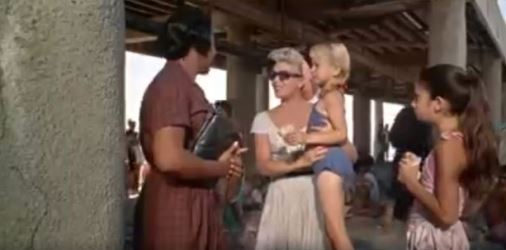
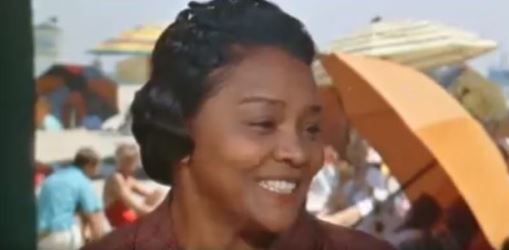
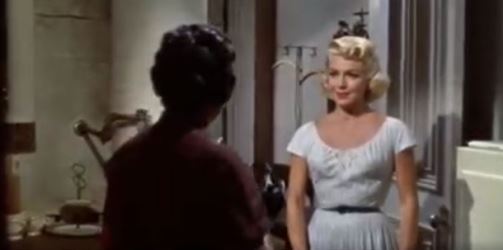

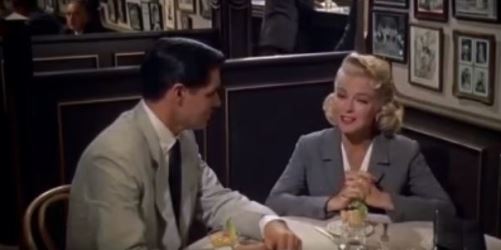
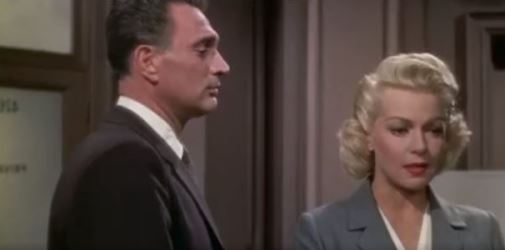



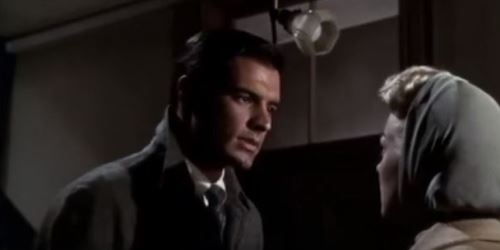


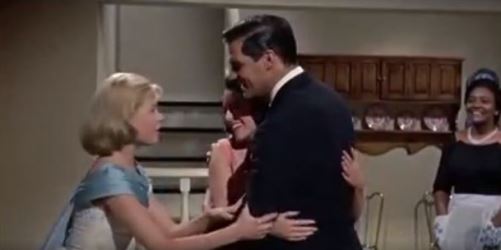
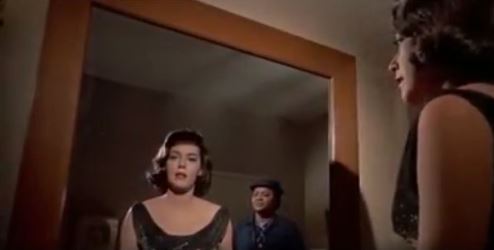
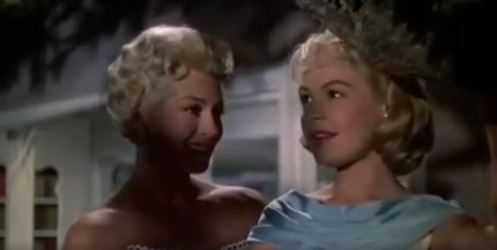

So interesting, and I especially liked the scenes you chose for pictures. When I first saw this (I was much younger) I thought Susan Kohners’ portrayal was just mean. Now I can see she does an excellent job of expressing the characters conflict, frustration, and despair. I think it’s her storyline that has kept this film remembered. I don’t find Lana Turners storyline nearly as interesting. Two scenes always stick with me, One, near the end Annie tells Lora she is active in her church and is a member of several local clubs, Lora says “Why Annie I never knew!” and Annie replies “Miss Lora…you never asked…” It’s supposed to indicate how self- focused Turner’ s character has been, but I’ve always been slightly surprised too as all we see Annie do for the most part is Lora’ s cooking, cleaning and ironing! I like the scene where Sandra Dee tells her mother not to worry about her, she’ll eventually get over her infatuation with Steve. Thank you always for sharing and letting us share thoughts and reflections.
LikeLike
Susan Kohner’s character does come across as much more self-centred and mean than Fredi Washington’s, I agree. I have a feeling that if I’d watched this film when I was younger – perhaps even as recently as ten years back – I’d not have liked her a bit. Now, I can see some of anguish she’s going through, and that makes me see her as a conflicted, deeply unhappy and confused young woman who is trying somehow to go her own way, not burdened by the ‘taint’ of being black. I agree with you that Lana Turner’s character doesn’t have as interesting a storyline (to be honest, to me she comes across as pretty selfish – as Sandra Dee does tell her in one scene).
Thank you for your comment, and thank you for alerting me to the original Imitation of Life which led me here.
LikeLike
Love this film. In my all-time top three.
LikeLike
:-) And which are the other two?
LikeLike
Great review. I also like that everyone is both sympathetic and flawed in this movie. I realise black people and mixed race people have real problems with Sarah Jane in this, but if you can say one version of the tragic mulatto trope is better than another, I think this is at least a sympathetic and human version.
My favourite thing is the way the movie reveals Annie as a prominent figure in a black culture that was hidden from the main character by her own self-centredness. Such a good metaphor for a society (and film industry) that doesn’t show or care about POC.
LikeLike
Thank you! I’m glad you liked this review. And I agree completely with what you say – that the characters are all both more sympathetic as well as more flawed than in the earlier one. I think, generally, more real people. In the 1934 film, Claudette Colbert’s character comes across as this virtuous female who’s always good (yes, today’s audience sees the political incorrectness of her pretty much stealing someone else’s recipe and then being ‘generous’ in giving 20% for it – but that would have been probably perfectly acceptable back then). Lana Turner’s character is much less of an angel, and is told so to her face.
Good point about Annie’s being a prominent figure in black society – that was a point well made in the film, and so subtly too (and with so much dignity by Annie) that one could miss it.
LikeLike